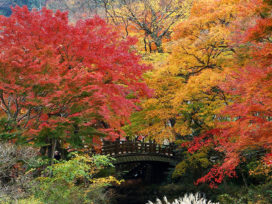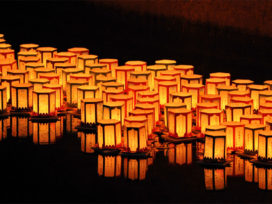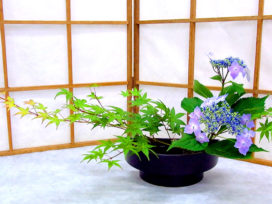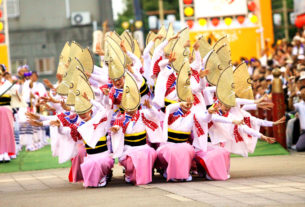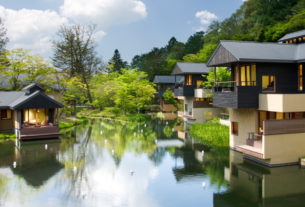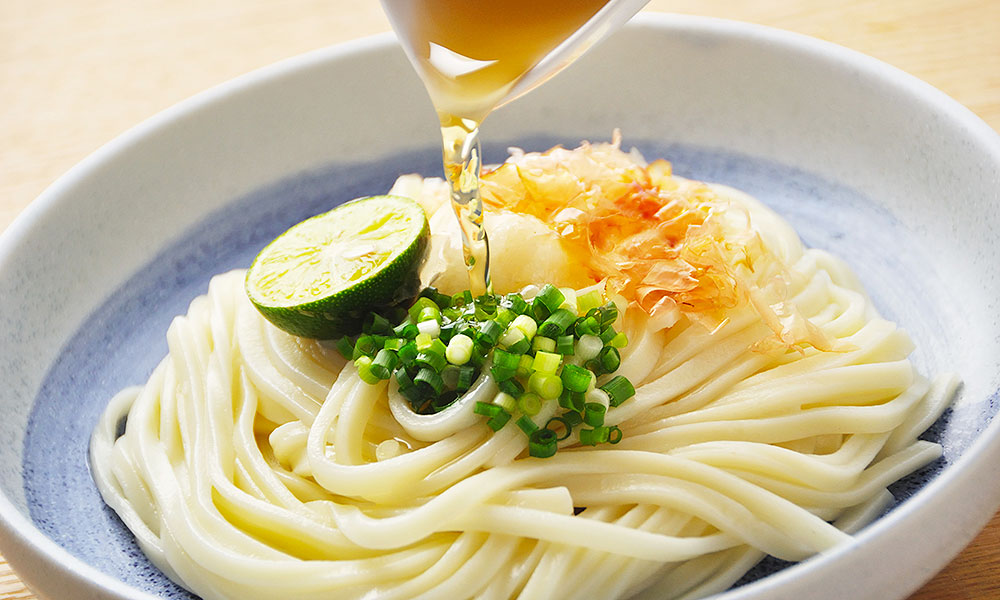
Udon Noodles: Healthy, Flavorful and Diverse
Tasty, filling and generally inexpensive: no wonder udon is one of the most favorite noodles in Japan, and increasingly gaining popularity overseas. Udon is not only delicious, but it can be served in so many different ways, such as cold, hot, and even fried. Also, there are practically no rules when it comes to toppings, so everyone can tailor udon to their own taste.
Udon: More Than Just a Noodle
Along with soba and ramen, udon is undeniably one of the most loved noodles in Japan. Just take a stroll inside any train station or commercial district in Japan, and chances are there will be one (or several!) shops serving udon. Why is udon so popular? First of all, it’s inexpensive, delicious and can be eaten on-the-go, thanks to the many udon restaurants located near train tracks offering quick meals for busy commuters. Udon is the quintessential fast food in Japan, and it even rivals rice, Japan’s staple food. Secondly, udon can be easily customized to please everyone’s taste. On a hot summer day, cold udon can be very refreshing, while a bowl of steaming noodles is warming and comforting in the winter.
Thicker than soba and ramen noodles, udon is made using solely three ingredients: wheat flour, water and salt. According to the traditional handmade method, salt is added to water to firm up the gluten in the wheat flour, in order to give the noodle its chewy texture. The amount of salt determines the firmness of the noodle. Then, the flour is thoroughly hand-mixed with the salted water to form dough, which is trampled on (by foot!) to enhance the stickiness. After resting overnight, the dough is evened out with a rolling pin, and sliced into strands of equal size. Finally, the noodles are boiled for just a few minutes, and rinsed in cold water to make them firm. Nowadays, many factories mass produce udon in a very short time, but nothing beats the flavor of handmade noodles.
Typical hot udon dishes include the classic kake udon, in which noodles are simmered in a dashi-based broth, and topped with thinly sliced green onions and sometimes a piece of kamaboko (fish cake). Kitsune udon, literally meaning fox udon, is topped with sweetened deep-fried tofu pockets called aburaage. There is even dish called curry udon, which combines a curry-flavored soup and sometimes meat and vegetables. Udon can also be fried along with meat and vegetables for an easy and tasty option called yakiudon.
In Japan, udon is often eaten at home as it is an easy dish to prepare using just a few staple ingredients that most people already keep in their fridge, and convenient packs of frozen udon. With the help of a bottle of mentsuyu (a Japanese soup base made from sake, mirin, soy sauce, kombu and dried bonito flakes), and some vegetables and meat as toppings, it’s easy to create a flavorful udon meal in just a few minutes.
Many Regions, Many Udon
While the flavor of broth and toppings differ from region to region, the noodle shape is perhaps the most obvious difference between all the regional specialities. Here are just a few:

Inaniwa Udon (Akita prefecture)①
The Inaniwa noodles are hand-stretched and slightly thinner than regular udon. The production of this type of udon requires careful selection of ingredients and human effort, so they cannot be made in large quantities.
Mimi Udon (Tochigi prefecture)②
Literally meaning ‘ear udon”, it is eaten at New Years, and it has a distinctive shape: the noodle is folded into an ear-like shape, which represent devil ears. It is said to keep the evil spirits away from the family and to bring good luck.
Hoto (Yamanashi prefecture)③
Popularized by the warlord Takeda Shingen, this dish is characterized by its thick broth made with miso, pumpkins, carrots and other vegetables. Wide and flat non-salted noodles are simmered in the broth.
Oshibori Udon (Nagano prefecture)④
This 400-year old recipe combines a soup made from a spicy daikon radish grown in Nagano, which is grated and pressed (hence the name shibori, which means squeezing, or pressing) to extract the juice. It is mixed with miso and dried bonito shavings, resulting in a warming, spicy dish also used to fight colds.
Kishimen (Aichi prefecture)⑤
Kishimen designates a broad and flat noodle particular to the Nagoya area. Any ingredients can be added as a topping, but dried bonito shavings, thinly-sliced kamaboko and boiled spinach are among regular ingredients.
Ise Udon (Mie prefecture)⑥
Ise noodles are very soft and thick, and served in a slightly sweet black broth made from soy sauce and bonito flakes. Green onion and sometimes a raw egg are served as garnish.
The Kingdom of Udon: Kagawa Prefecture

The udon in Kagawa is known as Sanuki udon (the old name of Kagawa), and is one of the best-known kinds all over Japan, and now even overseas. Kagawa is referred to as the kingdom of udon for many reasons. For one, high quality wheat is produced in the prefecture thanks to the suitable climate of the region, and this wheat gives sanuki udon its unique taste and texture. In addition, the method of preparation of noodles has a long history and has been passed down several generations. The delicious taste of sanuki udon makes it one of the most favorites in the country.
The characteristics of Sanuki udon is a squared-shape noodle with flat edges. The noodle is served very firm, a bit like al dente pasta. The firmness gives it a pleasant, chewy texture, and it is served in a highly fragrant iriko dashi (anchovy stock).
Kagawa is Japan’s smallest prefecture, but it is the biggest consumer of udon. With a population of just over one million residents, it boasts over 900 udon shops, so needless to say, it really is the capital of udon.
Kagawa prefecture is also renowned for its numerous self-serve udon restaurants, in which customers simply order their preferred portion of noodles, then proceed to add any toppings and condiments they like. Usual toppings are tempura, which is deep-fried veggies and seafood. Condiments such as chopped green onion and ginger are free and customers can add as much as they wish. Often, there are dispensers of broth to pour on top of the noodles, with a few different kinds on offer. This type of self-serve udon restaurants has not only spread to other places in Japan, but also all over Southeast Asia and even worldwide.
Kagawa is very serious about its udon, and visitors to the region can even hop on a certified ‘udon taxi’ and let an expert driver guide them to udon establishments. There are also some udon schools in the prefecture, where people can learn how to make udon from scratch and learn more about the history. Some Kagawa udon shops even serve udon ice cream, which is a sweetened soft serve ice cream containing small bits of udon.
Udon in Every Way
Thanks to the countless ways in which udon can be consumed, it is practically impossible to get bored of this dish. Udon is a quick food that can be enjoyed at home, or eaten quickly during a train transfer. No matter how you choose to eat udon, don’t forget to slurp it to show how delicious it is!
Text: Vivian Morelli

